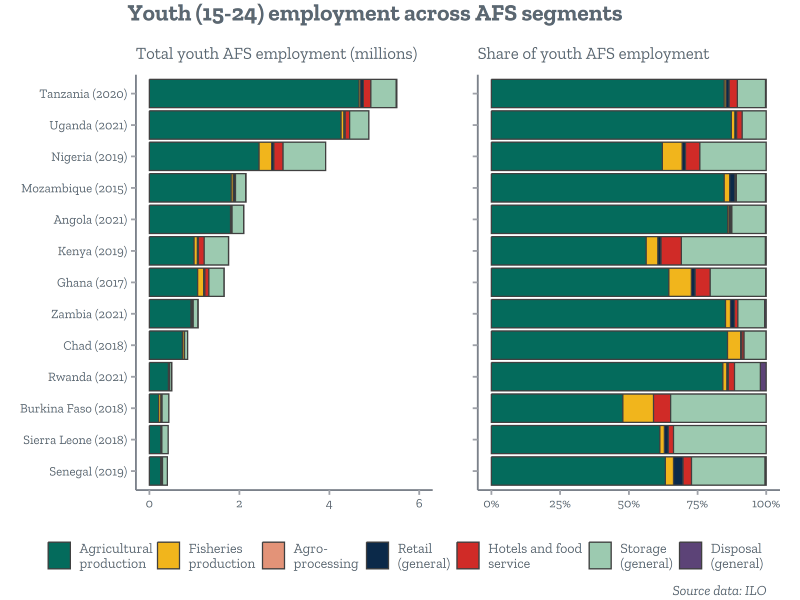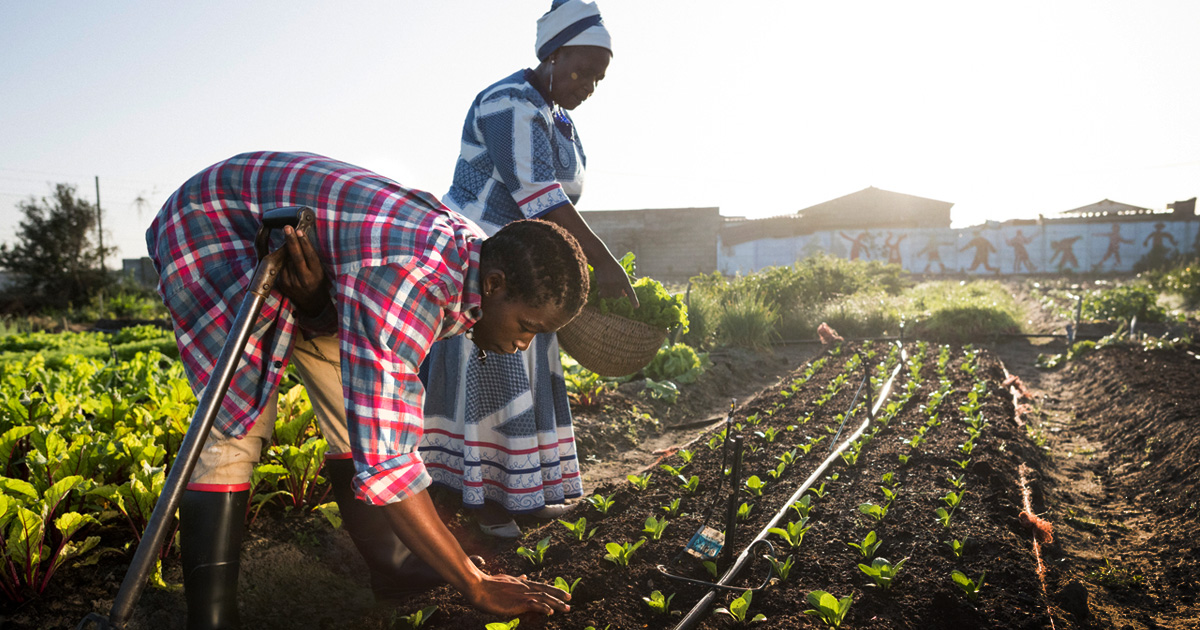Project Overview
To highlight opportunities and investigate potential challenges to supporting youth employment in agri-food systems in Africa, Mathematica used secondary data sources to analyze and visualize factors that influence agri-food system and employment outcomes.
Ensuring that Africa’s youth have rewarding employment options in the agriculture sectors requires diagnosing trends and forecasting threats affecting both employment and agri-food systems. Mathematica’s ability to process large and disparate volumes of data generated insights that can help direct investments and policy to improve youth opportunities in agri-food systems.
- Systemic Link Consulting
- Athari Advisory Services (AAS)
Mastercard Foundation
Agri-food systems (AFS), an enormous driver of economies in sub-Saharan Africa, provide significant livelihood opportunities for young people in Africa. The future of these opportunities faces many uncertainties stemming from climate change, geopolitical tensions, technological advances, urbanization, globalization, and other economic and demographic shifts. To help African AFS decision-makers ensure that tomorrow’s agri-food systems continue to provide high-quality economic opportunities for youth, Mathematica partnered with Systemic Link Consulting (SLC) and Athari Advisory Services (AAS) to produce a use case of data-driven foresight analytics.

Mathematica gathered, analyzed, and visualized data to provide AFS decision-makers with answers to the following questions:
- What will be the rural youth employment demands over the coming decades?
- How are employment patterns across different sectors in Africa’s economies likely to change, given different trajectories of economic development?
- What are the likely mega-trends and uncertainties for Africa’s agri-food systems by 2050, and what are the implications for employment?
Using secondary data from over 15 sources, we visualized historic and projected trends in domains that drive agri-food systems, including population growth, employment, agricultural production, urbanization, international and regional trade, technology access, and land consolidation. We developed over 100 visualizations to support discussions and foresight analysis at a 4-day workshop in Mombasa, Kenya with African AFS entrepreneurs to guide discussions on key system drivers and outcomes, which culminated in the development of a position paper.
Following the workshop, Mathematica supported SLC and AAS in disseminating material to continue supporting AFS entrepreneurs and other decision-makers with sectoral insights. We contributed figures to position papers, and we synthesized several possible outcomes in key AFS domains to illustrate how drivers and outcomes would appear in four potential future scenarios in African agri-food systems. To ensure posterity of these materials for future AFS entrepreneurs, we developed this micro-site to host data visualizations and future scenarios, alongside narrative descriptions.
Related Staff
Efficiency Meets Impact.
That's Progress Together.
To solve their most pressing challenges, organizations turn to Mathematica for deeply integrated expertise. We bring together subject matter and policy experts, data scientists, methodologists, and technologists who work across topics and sectors to help our partners design, improve, and scale evidence-based solutions.
Work With Us



